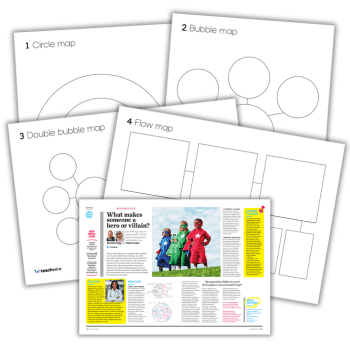What to do After a Failed Ofsted Inspection

A failed inspection should represent the first step in a journey of improvement, says Ruth Sparkes – and that’s the message you need to share

- by Ruth Sparkes

School life can feel fraught much of the time, and crisis points all too often seem to be lurking just around the corner – but few situations are more likely to send everyone who works in an institution into something approaching panic mode than a failed Ofsted inspection.
Of course, the main thing to take from such a report is the need for improvement, and guidance on how that improvement can be achieved – however, there is also the immediate issue of how the result should be shared with stakeholders and the wider community.
The way communication is handled around a poor inspection outcome can help make or break a school’s reputation; and like it or not, as a rule, the media will have a major role to play in this.
Get planning
If you work with a PR professional, ensure they see a copy of your initial confidential draft from Ofsted at the first opportunity.
Hopefully, they will have dealt with something similar many times. Make a quick PR plan and map the likely outcomes, starting from a worst-case scenario and working backwards.
What are the most damaging things that Ofsted have highlighted? Pull these out and list them. Then do the same for the good things.
It’s a difficult exercise, but it has to be done, and should help you gather your thoughts.
You are required to ensure that all of your parents have access to the report and are aware of the result, and you’re able to share this information a couple of days before it’s posted on Ofsted’s website.
So ideally, if the report is published on Wednesday, you will have had a parents’ meeting on Monday.
Families will be desperate for reassurance. They’ll want to understand Ofsted’s findings, and know what you’re doing to rectify the issues raised. You need to be realistic, and honest – and manage expectations.
As soon as this meeting is concluded and your report shared, this is the time to monitor social media and respond appropriately. Be as open as you can, but be careful, because once the school has spoken on the matter, it’s out there in the public domain.
Take control
If journalists haven’t been in contact by this point, they soon will be.
Remember, they have a job to do, and if you don’t engage with them, they may well run with commentary from anyone who appears to be in the know or even moderately informed, however inaccurate they turn out to be.
So, have your own statement ready. It should be short and clear – and above all, it must highlight the positive journey ahead. Things to think about include:
- How do you feel about this report: disappointed, frustrated, saddened?
- What are you doing now? Has work already begun to address issues identified by Ofsted?
- What are your priorities? Clearly and succinctly explain these.
- With whom are you working with to ensure improvement?
This may all seem unimportant – trivial, even – in the context of the work that will need to be done in order to effect real school improvement; but positive PR at this point can make a huge difference in the long term.
After all, in these digital days, bad news never disappears; and the message you put out now will remain a quick ‘google search’ away for a very long time indeed.
In brief:
Do
- Accept Ofsted’s findings (unless you are officially challenging the report)
- Tell the truth as much as possible – there may be legal or HR issues
- Engage parents as much as possible – they can be firm supporters for the school on social media
Do not
- Obfuscate, spin or lie
- Feel that you have to answer all questions from every journalist – if you have sent a statement that should be enough
- Add to the story unnecessarily or allow yourself to be photographed looking sad/defiant outside the school gates
Ruth Sparkes is MD of empra.co.uk, a specialist education PR and marketing company.







